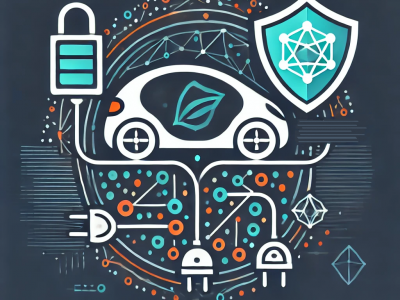Security

The National Institute of Standards and Technology (NIST) has recommended the use of stateful hash-based digital signatures for long-term applications that may require protection from future threats that use quantum computers. XMSS and LMS, the two approved algorithms, have multiple parameter options that impact digital signature size, public key size, the number of signatures that can be produced over the life of a keypair, and the computational effort to validate signatures. This collection of benchmark data is intended to support system designers in understanding the differences among
- Categories:
 17 Views
17 Views
This dataset provides the full list of security controls proposed in the article "Enhancing Cybersecurity in the Judiciary: Integrating Additional Controls into the CIS Framework". The dataset includes a detailed classification of security controls derived from the CIS Controls framework and additional measures specifically tailored to address cybersecurity challenges in the Judiciary. These controls enhance operational risk management, digital asset protection, and organizational resilience.
- Categories:
 51 Views
51 Views
Dataset with syntentic TLSA DNS records for DNSSEC evaluation. Created with several RSA2048, RSA3072, RSA4096, ECDSAP256, ECDSAP384, or ECDSAP512 keys. Note: ECDSAP256 conforms to prime256v1, ECDSAP348 conforms to secp384r1 and ECDSAP512 conforms to secp521r1
Keys and certificates are repeated using a factor of 500. Keys and certificates are available in https://gitlab.gast.it.uc3m.es/dnsseccollisions/tlsadataset
- Categories:
 33 Views
33 ViewsThe recent developments in the field of the Internet of Things (IoT) bring alongside them quite a few advantages. Examples include real-time condition monitoring, remote control and operation and sometimes even remote fault remediation. Still, despite bringing invaluable benefits, IoT-enriched entities inherently suffer from security and privacy issues. This is partially due to the utilization of insecure communication protocols such as the Open Charge Point Protocol (OCPP) 1.6. OCPP 1.6 is an application-layer communication protocol used for managing electric vehicle chargers.
- Categories:
 706 Views
706 Views
This dataset comprises Channel State Information (CSI) data collected from WiFi signals in six indoor environments, specifically designed for research in indoor intrusion detection. The dataset captures fine-grained variations in wireless signals caused by human, which are indicative of potential intrusions. CSI data, extracted from commercial WiFi chipsets, provides detailed amplitude and phase information across subcarriers, enabling robust detection of subtle environmental changes.
- Categories:
 132 Views
132 Views
The dataset contains thousands of signal frames from 60 ZigBee devices. The devices and USRP N210 were placed on two movable cabinets on wheels with a maximum distance of 3 meters between them. Due to distance constraints, a coaxial attenuator with an attenuation of 60 dB was fitted at the receiver in order to obtain signals at low SNR. The SNR of the received signal is changed by adjusting the distance between the two cabinets, which can be reduced to about 0 dB when the distance is about 3 metres.
- Categories:
 59 Views
59 Views
This is the replication package of our paper entitled “Toward a Common Understanding of Cryptographic Agility - A Systematic Review”.
Abstract of the paper:
- Categories:
 20 Views
20 Views
One of the leading causes of early health detriment is the increasing levels of air pollution in major cities and eventually in indoor spaces. Monitoring the air quality effectively in closed spaces like educational institutes and hospitals can improve both the health and the life quality of the occupants. In this paper, we propose an efficient Indoor Air Quality (IAQ) monitoring and management system, which uses a combination of cutting-edge technologies to monitor and predict major air pollutants like CO2, PM2.5, TVOCs, and other factors like temperature and humidity.
- Categories:
 373 Views
373 Views
DALHOUSIE NIMS LAB ATTACK IOT DATASET 2025-1 dataset comprises of four prevalent types attacks, namely Portscan, Slowloris, Synflood, and Vulnerability Scan, on nine distinct Internet of Things (IoT) devices. These attacks are very common on the IoT eco-systems because they often serve as precursors to more sophisticated attack vectors. By analyzing attack vector traffic characteristics and IoT device responses, our dataset will aid to shed light on IoT eco-system vulnerabilities.
- Categories:
 346 Views
346 Views
Smart contract vulnerability detection is a critical task in ensuring the security of blockchain systems. However, challenges such as non-public source code and label noise, especially systematic noise, significantly hinder the effectiveness of detection models. This paper introduces FedCNO (Federated Contract Noise Optimizer), an innovative federated learning framework designed to address these issues. FedCNO uniquely integrates local and global label correction mechanisms to improve label accuracy while maintaining data privacy.
- Categories:
 32 Views
32 Views